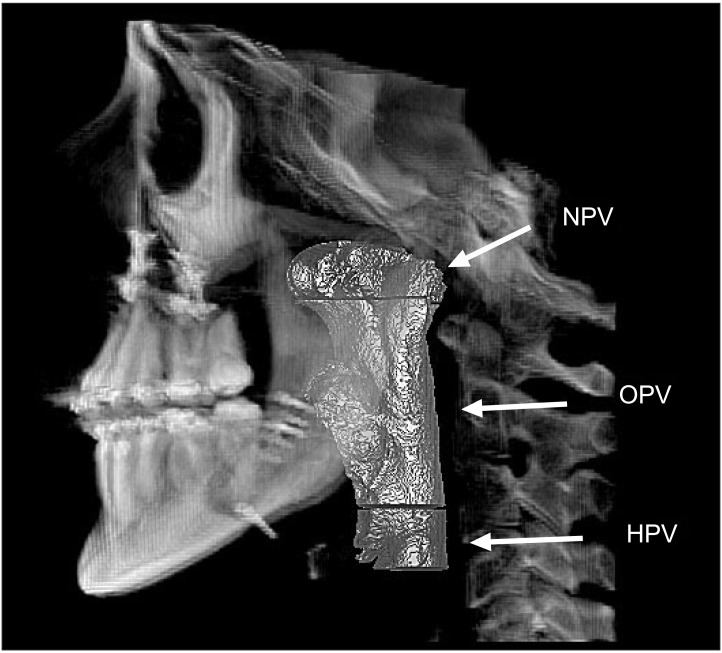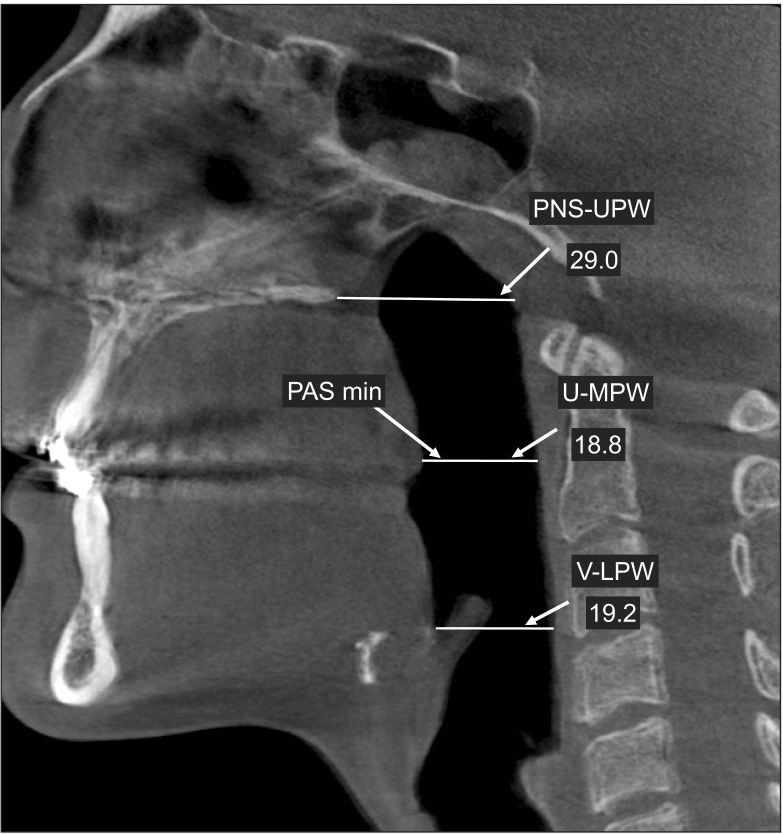J Korean Assoc Oral Maxillofac Surg.
2017 Apr;43(2):88-93. 10.5125/jkaoms.2017.43.2.88.
Two-dimensional and volumetric airway changes after bimaxillary surgery for class III malocclusion
- Affiliations
-
- 1Oral and Maxillofacial Surgeon, Maxillofacial Trauma Fellow, Sina Hospital, Tehran University of Medical Sciences, Tehran, Iran.
- 2Department of Oral and Maxillofacial Radiology, Dental Material Research Center and School of Dentistry, Mashhad University of Medical Sciences, Mashhad, Iran.
- 3Oral and Maxillofacial Surgeon, Mashhad University of Medical Sciences Dental School, Mashhad, Iran. Hamedkermani1980@gmail.com
- 4Oral and Maxillofacial Diseases Research Center, Mashhad, Iran.
- KMID: 2377011
- DOI: http://doi.org/10.5125/jkaoms.2017.43.2.88
Abstract
OBJECTIVES
Any change in maxilla and mandible position can alter the upper airway, and any decrease in the upper airway can cause sleep disorders. Thus, it is necessary to assess airway changes after repositioning of the maxilla and mandible during orthognathic surgery. The purpose of this study was to evaluate linear and volumetric changes in the upper airway after bimaxillary surgery to correct class III malocclusion via cone-beam computed tomography (CBCT) and to identify correlations between linear and volumetric changes.
MATERIALS AND METHODS
This was a prospective cohort study. CBCTs from 10 class III patients were evaluated before surgery and three months after. The Wilcoxon one-sample test was used to evaluate the differences in measurements before and after surgery. Spearman's rank correlation coefficient was used to test the correlation between linear and volumetric changes.
RESULTS
The results show that the nasopharyngeal space increased significantly, and that this increase correlated with degree of maxillary advancement. No significant changes were found in volumes before and after surgery. A correlation was found between linear and volumetric oropharyngeal changes.
CONCLUSION
Bimaxillary surgical correction of class III malocclusion did not cause statistically significant changes in the posterior airway space.
MeSH Terms
Figure
Reference
-
1. Mattos CT, Vilani GN, Sant'Anna EF, Ruellas AC, Maia LC. Effects of orthognathic surgery on oropharyngeal airway: a meta-analysis. Int J Oral Maxillofac Surg. 2011; 40:1347–1356. PMID: 21782388.
Article2. Young T, Finn L, Peppard PE, Szklo-Coxe M, Austin D, Nieto FJ, et al. Sleep disordered breathing and mortality: eighteen-year follow-up of the Wisconsin sleep cohort. Sleep. 2008; 31:1071–1078. PMID: 18714778.3. Durán J, Esnaola S, Rubio R, Iztueta A. Obstructive sleep apnea-hypopnea and related clinical features in a population-based sample of subjects aged 30 to 70 yr. Am J Respir Crit Care Med. 2001; 163:685–689. PMID: 11254524.
Article4. Holty JE, Guilleminault C. Maxillomandibular advancement for the treatment of obstructive sleep apnea: a systematic review and meta-analysis. Sleep Med Rev. 2010; 14:287–297. PMID: 20189852.
Article5. Chen F, Terada K, Hua Y, Saito I. Effects of bimaxillary surgery and mandibular setback surgery on pharyngeal airway measurements in patients with Class III skeletal deformities. Am J Orthod Dentofacial Orthop. 2007; 131:372–377. PMID: 17346593.
Article6. Pereira-Filho VA, Castro-Silva LM, de Moraes M, Gabrielli MF, Campos JA, Juergens P. Cephalometric evaluation of pharyngeal airway space changes in class III patients undergoing orthognathic surgery. J Oral Maxillofac Surg. 2011; 69:e409–e415. PMID: 21757274.
Article7. Becker OE, Avelar RL, Göelzer JG, Dolzan Ado N, Haas OL Jr, De Oliveira RB. Pharyngeal airway changes in Class III patients treated with double jaw orthognathic surgery--maxillary advancement and mandibular setback. J Oral Maxillofac Surg. 2012; 70:e639–e647. PMID: 23078826.
Article8. Degerliyurt K, Ueki K, Hashiba Y, Marukawa K, Nakagawa K, Yamamoto E. A comparative CT evaluation of pharyngeal airway changes in class III patients receiving bimaxillary surgery or mandibular setback surgery. Oral Surg Oral Med Oral Pathol Oral Radiol Endod. 2008; 105:495–502. PMID: 18329585.
Article9. Jakobsone G, Neimane L, Krumina G. Two- and three-dimensional evaluation of the upper airway after bimaxillary correction of Class III malocclusion. Oral Surg Oral Med Oral Pathol Oral Radiol Endod. 2010; 110:234–242. PMID: 20580280.
Article10. Guijarro-Martínez R, Swennen GR. Cone-beam computerized tomography imaging and analysis of the upper airway: a systematic review of the literature. Int J Oral Maxillofac Surg. 2011; 40:1227–1237. PMID: 21764260.
Article11. Lowe AA, Fleetham JA, Adachi S, Ryan CF. Cephalometric and computed tomographic predictors of obstructive sleep apnea severity. Am J Orthod Dentofacial Orthop. 1995; 107:589–595. PMID: 7771363.
Article12. El H, Palomo JM. Measuring the airway in 3 dimensions: a reliability and accuracy study. Am J Orthod Dentofacial Orthop. 2010; 137(4 Suppl):S50.e1–S50.e9. discussion S50-2. PMID: 20381759.
Article13. Sears CR, Miller AJ, Chang MK, Huang JC, Lee JS. Comparison of pharyngeal airway changes on plain radiography and cone-beam computed tomography after orthognathic surgery. J Oral Maxillofac Surg. 2011; 69:e385–e394. PMID: 21778015.
Article14. Battagel JM, Johal A, Smith AM, Kotecha B. Postural variation in oropharyngeal dimensions in subjects with sleep disordered breathing: a cephalometric study. Eur J Orthod. 2002; 24:263–276. PMID: 12143090.
Article15. Pae EK, Lowe AA, Sasaki K, Price C, Tsuchiya M, Fleetham JA. A cephalometric and electromyographic study of upper airway structures in the upright and supine positions. Am J Orthod Dentofacial Orthop. 1994; 106:52–59. PMID: 8017350.
Article16. Yildirim N, Fitzpatrick MF, Whyte KF, Jalleh R, Wightman AJ, Douglas NJ. The effect of posture on upper airway dimensions in normal subjects and in patients with the sleep apnea/hypopnea syndrome. Am Rev Respir Dis. 1991; 144:845–847. PMID: 1928960.
Article17. Muto T, Takeda S, Kanazawa M, Yamazaki A, Fujiwara Y, Mizoguchi I. The effect of head posture on the pharyngeal airway space (PAS). Int J Oral Maxillofac Surg. 2002; 31:579–583. PMID: 12521311.
Article18. Kawamata A, Fujishita M, Ariji Y, Ariji E. Three-dimensional computed tomographic evaluation of morphologic airway changes after mandibular setback osteotomy for prognathism. Oral Surg Oral Med Oral Pathol Oral Radiol Endod. 2000; 89:278–287. PMID: 10710450.
Article19. Hong JS, Park YH, Kim YJ, Hong SM, Oh KM. Three-dimensional changes in pharyngeal airway in skeletal class III patients undergoing orthognathic surgery. J Oral Maxillofac Surg. 2011; 69:e401–e408. PMID: 21571419.
Article20. Kim MA, Kim BR, Choi JY, Youn JK, Kim YJ, Park YH. Three-dimensional changes of the hyoid bone and airway volumes related to its relationship with horizontal anatomic planes after bimaxillary surgery in skeletal Class III patients. Angle Orthod. 2013; 83:623–629. PMID: 23311605.
Article21. Kollias I, Krogstad O. Adult craniocervical and pharyngeal changes--a longitudinal cephalometric study between 22 and 42 years of age. Part II: morphological uvulo-glossopharyngeal changes. Eur J Orthod. 1999; 21:345–355. PMID: 10502897.22. Partinen M, Guilleminault C, Quera-Salva MA, Jamieson A. Obstructive sleep apnea and cephalometric roentgenograms. The role of anatomic upper airway abnormalities in the definition of abnormal breathing during sleep. Chest. 1988; 93:1199–1205. PMID: 3371099.23. Gokce SM, Gorgulu S, Gokce HS, Bengi O, Sabuncuoglu F, Ozgen F, et al. Changes in posterior airway space, pulmonary function and sleep quality, following bimaxillary orthognathic surgery. Int J Oral Maxillofac Surg. 2012; 41:820–829. PMID: 22476009.
Article
- Full Text Links
- Actions
-
Cited
- CITED
-
- Close
- Share
- Similar articles
-
- A cephalometric study of the tongue and the intermaxillary space
- Postoperative changes in the pharyngeal airway space through computed tomography evaluation after mandibular setback surgery in skeletal class III patients: 1-year follow-up
- Three-dimensional analysis of pharyngeal airway change of skeletal class III patients in cone beam computed tomography after bimaxillary surgery
- Relations between posture and size of the tongue and dentoalveolar pattern
- The structural changes of pharyngeal airway contributing to snoring after orthognathic surgery in skeletal class III patients



